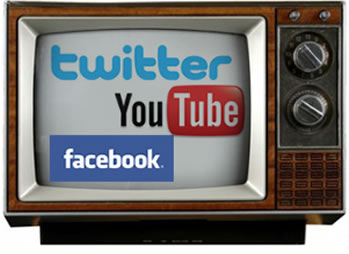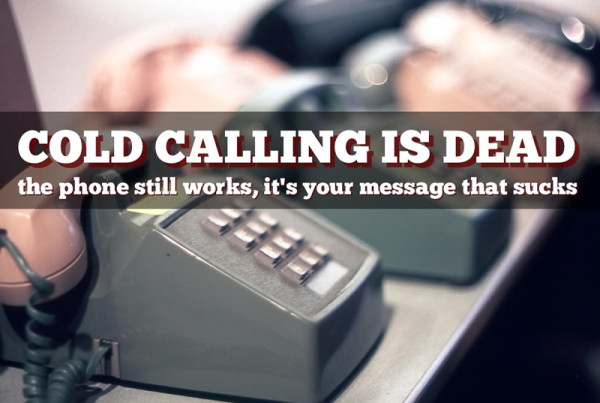 I’ve heard that there’s a mantra being uttered by some advertising agencies that we use “traditional advertising to drive social media“. This could indeed be a worthwhile concept if advertising agencies actually advised their clients to do this and took it beyond the mantra stage.
I’ve heard that there’s a mantra being uttered by some advertising agencies that we use “traditional advertising to drive social media“. This could indeed be a worthwhile concept if advertising agencies actually advised their clients to do this and took it beyond the mantra stage.
I for one am so sick of slogans and catch phrases that sound great in pitches and presentations but never get acted upon.
Using traditional advertising to support and drive a brand’s social and digital efforts would be extremely effective. The problem is that while it sounds good to say, most advertising agencies aren’t implementing this or even advising their clients to do this.
There can be no doubt that traditional advertising would be more effective and engaging if brands and agencies allowed social and traditional marketing channels to work cohesively as a unified approach. It’s clear that a brand’s potential audience (existing and prospective consumers) benefits by the experience that can be created by and between the consumer and the brand.
The touchpoints created would extend beyond the 30 second spot and allow for the creation of an ongoing relationship with a consumer. The amplification of this relationship is something that traditional can’t do on it’s own and the impact of the brand’s message on a personal level with the consumer is enhanced when traditional truly drives social.
But when’s the last time you actually saw a brand and their agency put this process in place? Dropping a URL or a hashtag in a commercial isn’t driving social and it’s certainly not encouraging any real relationship with the consumer.
That’s the problem. Most advertising agencies who spout the ideology of traditional advertising driving social don’t really understand how to do that. They may not even fully grasp the relationship building capacity of social.
Traditional advertising has the ability to tell a consumer WHY they should engage with a brand on social media but most commercials that are broadcast to the masses don’t even try to do that. The social “activation” is often simply a tagline. “Like us on Facebook” or “Follow us on Twitter” isn’t using traditional to drive social. That’s just copy.
It’s not memorable, it’s not engaging, and it certainly isn’t a compelling reason for the consumer to engage. You don’t go on a date with a girl and talk about yourself and then tell her to fall in love with you.It takes a lot more effort than that to win the girl and accordingly it takes a lot more effort than a tagline to build the consumer’s trust.
Here’s a news flash. Today’s consumer isn’t looking forward to seeing your commercial. Most will fast forward through it or switch the dial to get away from it. However they are viewing your social content. That’s assuming you’re actually producing compelling content…but that’s a whole different problem altogether if your brand or your agency isn’t.
Your Facebook, Twitter, Instagram and YouTube content has a better chance of being seen by consumers than a television commercial. And it costs a lot less to promote your content even with Facebook’s restrictions.
Do you see the difference there? People don’t want to see your commercials but they’ve opted to view your social content. Seriously, let that sink in for a moment. You’re actually spending money to force yourselves into viewer’s living rooms, knowing they don’t want to see it, but you’re not trying to amplify content where they are most receptive….that one difference is what most advertising agencies and a lot of brands simply don’t understand.
Advertising is going to change whether most advertising agencies like it or not. It’s simply inevitable.
It is clear that the thing we identify as television today will be radically different a decade from now. While it isn’t possible to predict all the changes, it is safe to say that most programs will be available on-demand and through any device. Advertisers will insist on hyper-targeting and increased use of product placement and brand advertising incorporated directly into programming content.
It will be more important than ever for advertisers to make their messages entertaining, relevant and reactive to changing audience sentiment. The analytics required to accomplish this will make the prior use of data from a few thousand Nielsen homes look like a quaint relic – Alan McGlade Forbes
 It’s a lot easier to “convert” someone who WANTS to see what your message (content) is than one your spamming a commercial to. Yes, let’s call commercials what they are in the terminology of our digital world.
It’s a lot easier to “convert” someone who WANTS to see what your message (content) is than one your spamming a commercial to. Yes, let’s call commercials what they are in the terminology of our digital world.
Traditional advertising is looked upon as spam. We didn’t ask for it, we didn’t opt-in, we didn’t fill out any form to have it shown to us and we don’t want it. It simply intrudes like a Nigerian prince who promises us the world.
This is what traditional advertising agencies and a lot of brands don’t understand. Your work, your craft…your business is nothing more than spam in our eyes. That’s why you have to spend so much money to get any attention at all.
But wait…traditional advertising drives sales! Sure it does. The same way sending out a gazillion emails makes money. Doesn’t make it effective. Doesn’t make it efficient. Doesn’t make it desired and it certainly doesn’t foster a relationship. That’s why you have to do so much of it.
It just means brands are overspending and working harder to reach an audience that would be more receptive to marketing that invites the consumer to engage and be a part of their community.
It appears that 2013 will be forever remembered as the year content marketing has come into its own. The opportunity for traditional advertising to fuel social content has never been bigger. but to seize this opportunity you have to be creating compelling content and then promoting the heck out of it.
Fortunately, finding your audience is easy. If an advertising agency truly believes in having traditional support social, it all starts there.
Otherwise, spouting that you’re an agency that uses traditional advertising to support social efforts is just a tired mantra and your credibility is at risk.
But as long as the client’s check clears, I guess the mantra of “we use traditional advertising to support social media” lives another day.


